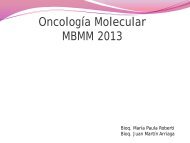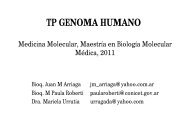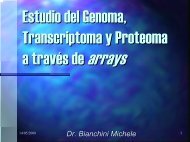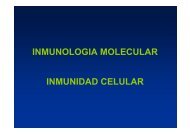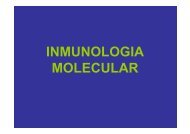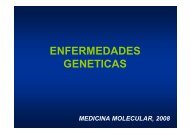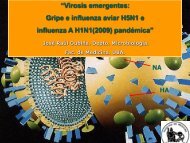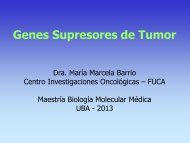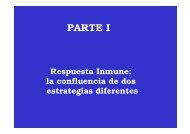FARMACOLOGIA DEL SISTEMA INMUNE
FARMACOLOGIA DEL SISTEMA INMUNE
FARMACOLOGIA DEL SISTEMA INMUNE
Create successful ePaper yourself
Turn your PDF publications into a flip-book with our unique Google optimized e-Paper software.
CTLA-4 is not readily detectable in naïve T cells<br />
but is rapidly upregulated upon T cell activation.<br />
CTLA-4 mRNA can be readily detected within 1 h of<br />
TCR engagement and peaks at about 24–36 h.<br />
However, CTLA-4 is not readily detectable at the cell surface<br />
until 24–48 h after activation.<br />
An accurate assessment of the kinetics of<br />
CTLA-4 protein expression is complicated<br />
by the fact that it is not primarily expressed at the cell surface.<br />
Surface expression of CTLA-4 is tightly regulated as a result<br />
of the presence of a tyrosine-based intracellular localization<br />
motif in its cytoplasmic tail which allows an association with<br />
the medium subunit of the clathrin-coated<br />
pit adaptor complex, AP2,thus providing a mechanism for<br />
CTLA-4 cellular localization. CTLA-4 expression on the<br />
T cell surface is stabilized and increased by tyrosine<br />
phosphorylation of the endocytosis motif, which inhibits<br />
AP2 association. It is noteworthy that the intracellular portion<br />
of CTLA-4 is 100% conserved among many different species<br />
of animals, suggesting that control of intracellular trafficking<br />
may be extremely important for its function. This motif results<br />
in both the rapid endocytosis of CTLA-4 from the cell surface to<br />
endosomal compartments, as well as the targeting of at<br />
least some CTLA-4 to the lysosomes for degradation.<br />
It is unclear whether endocytosed CTLA-4 can recycle back<br />
to the surface or if this represents a terminal pathway for the<br />
protein.



